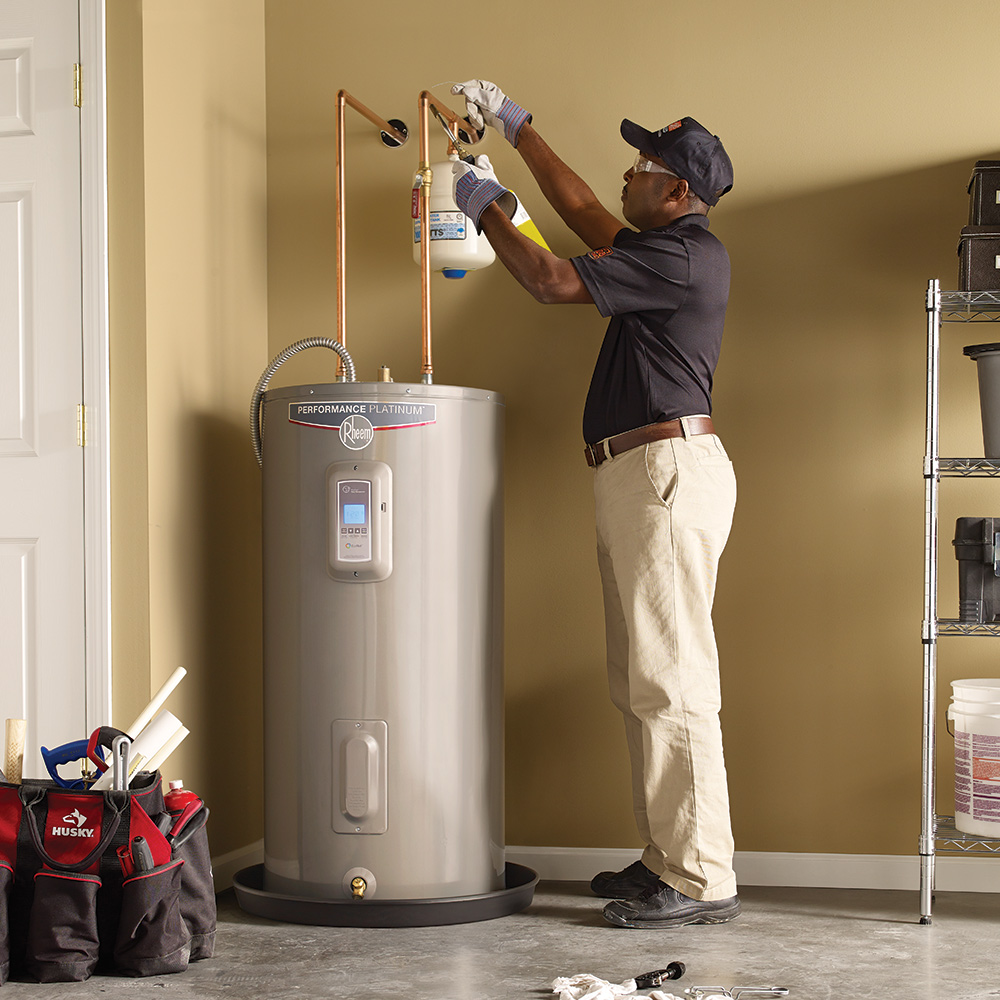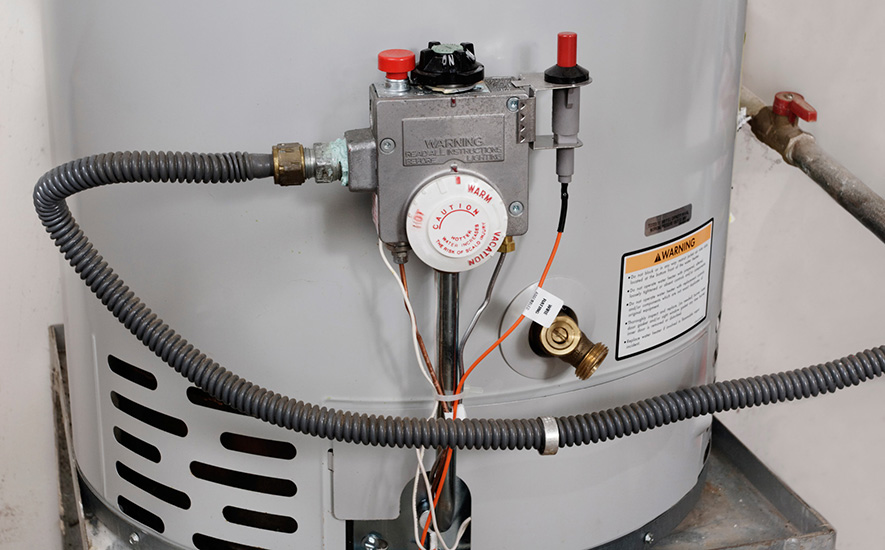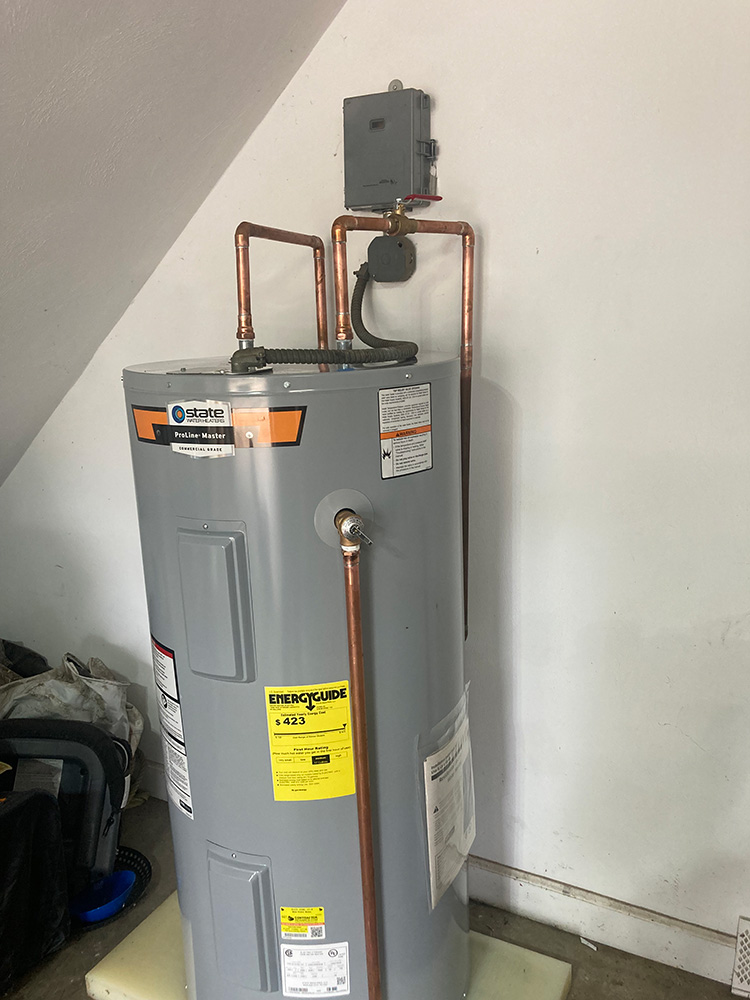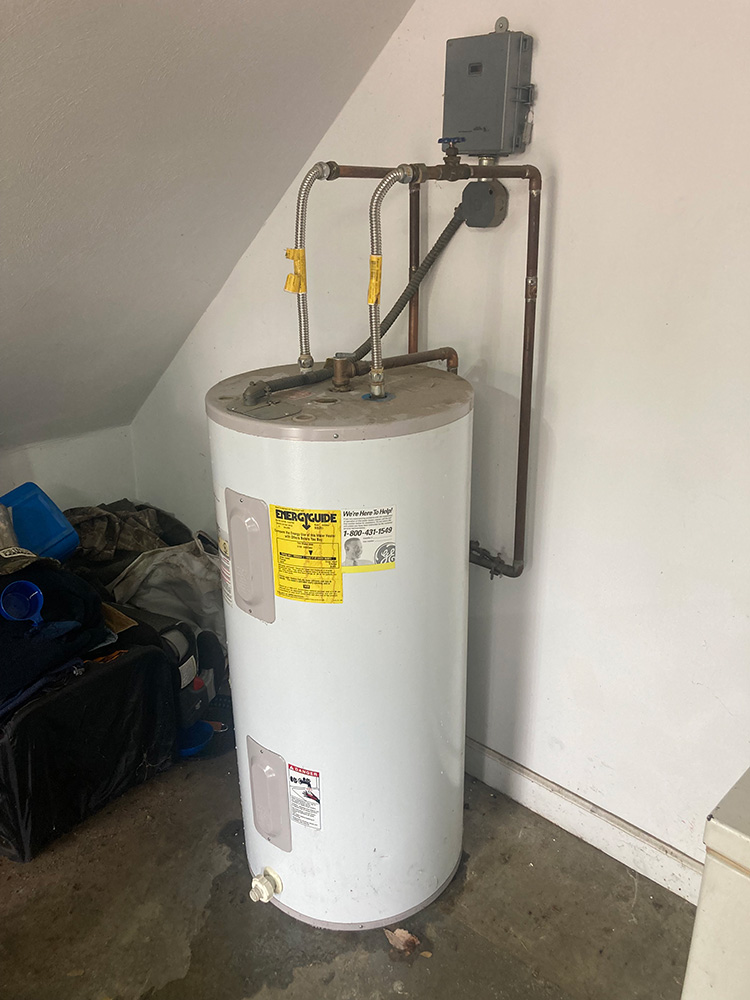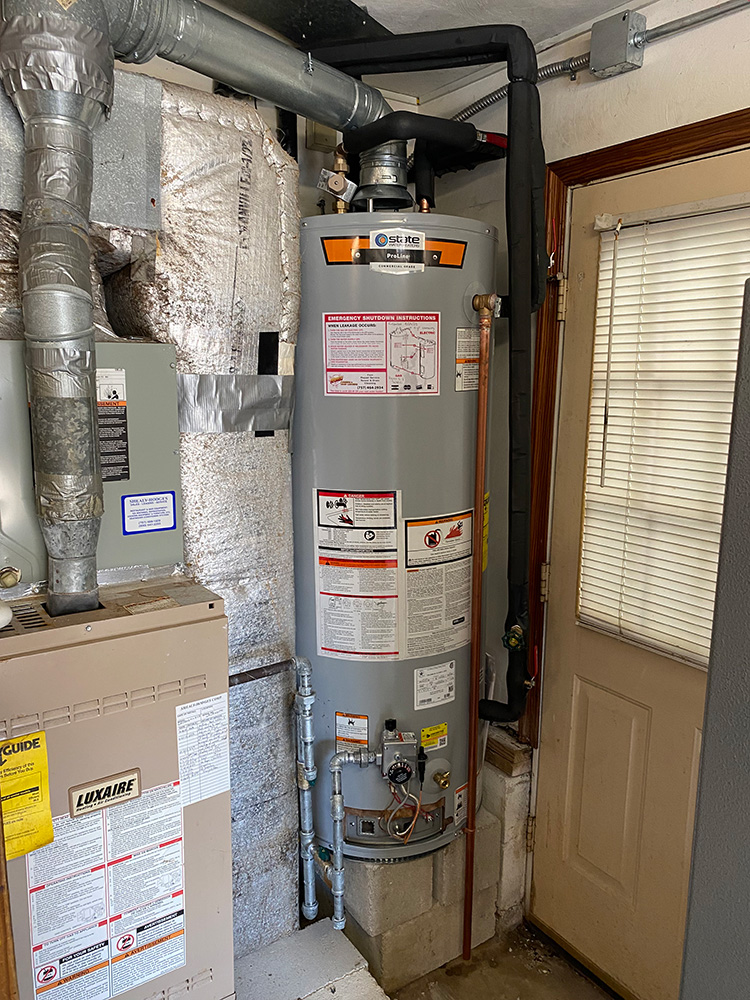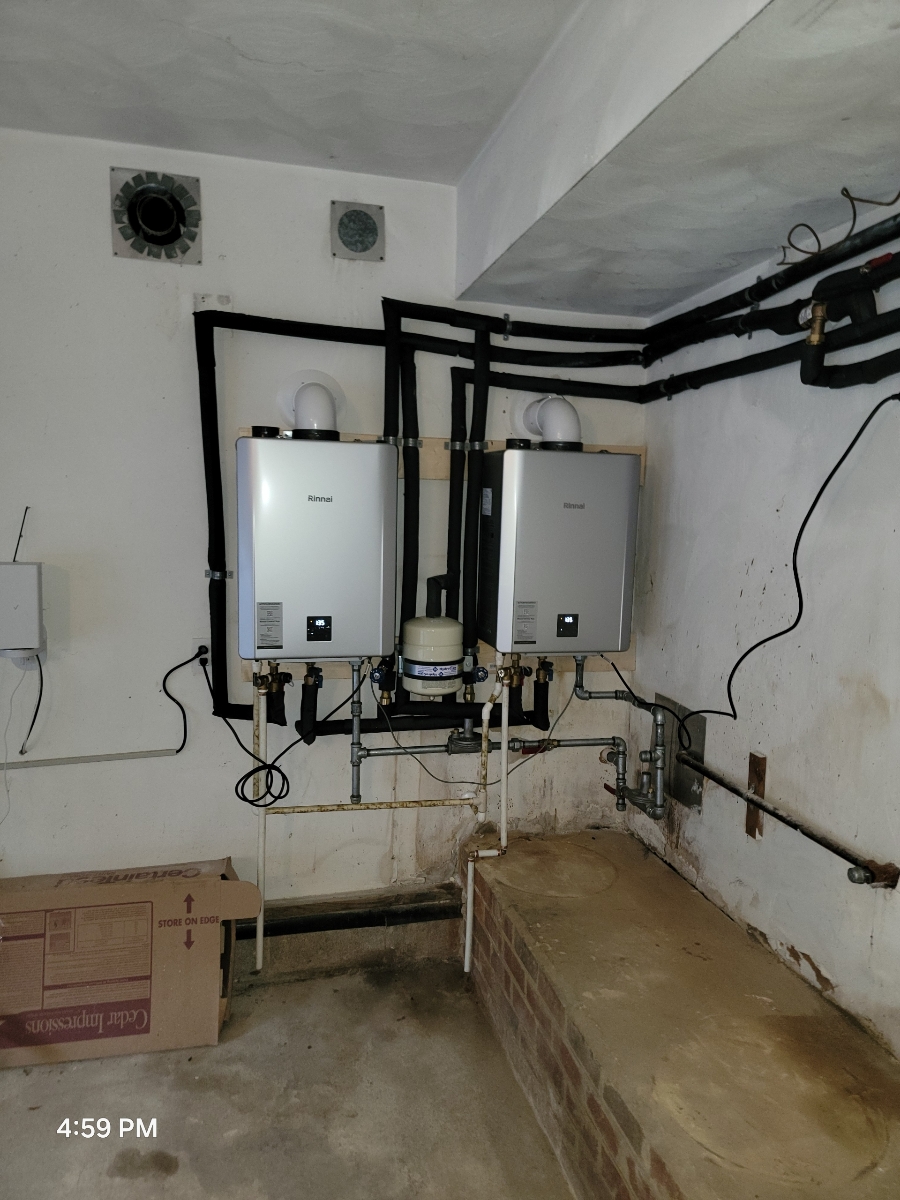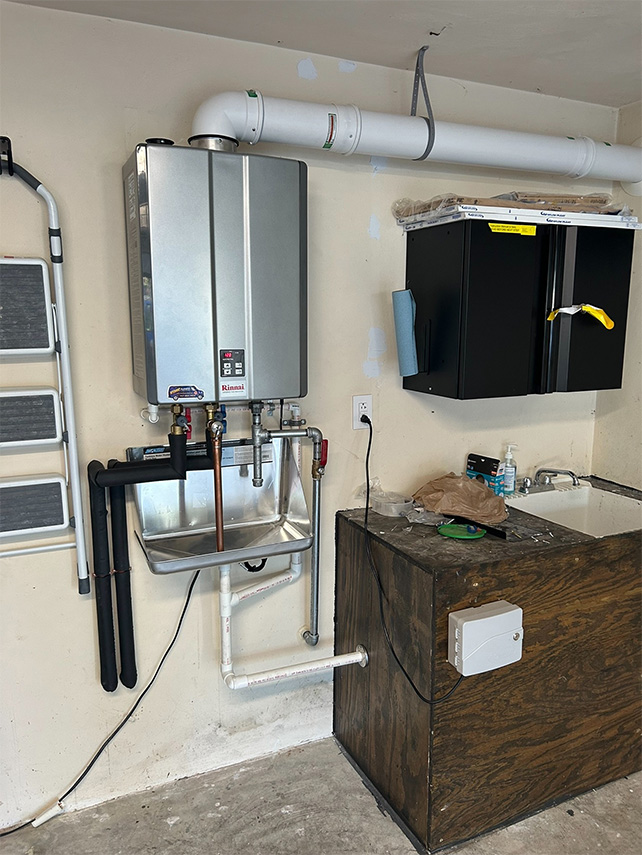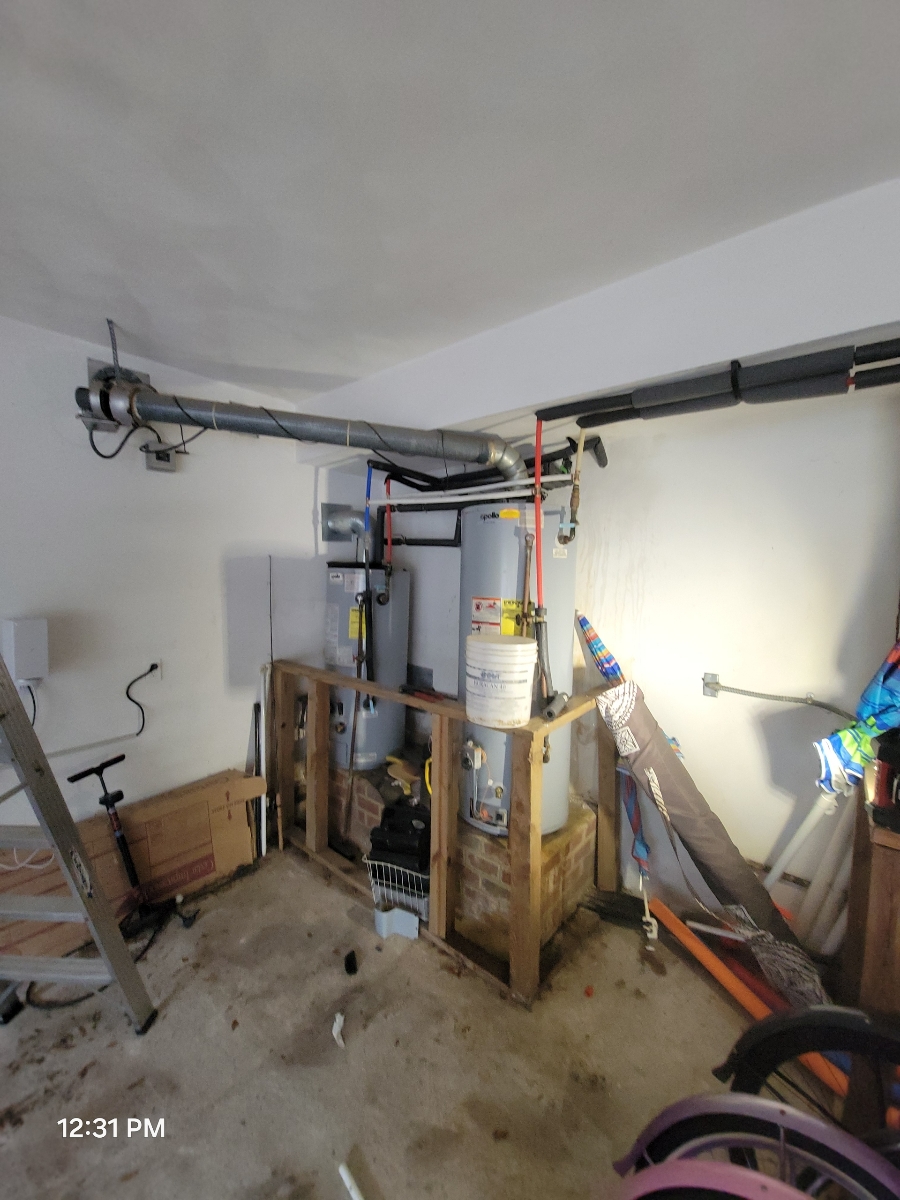Water Heaters
Atomic Plumbing is Hampton Roads’ leader in water heater installation and replacement.
Gas, Powered or Tankless,
Which Water Heater Is Right For You?
Nothing relaxes like a hot bath after a long day. You dip your toe in the water and…brrr! It’s ice-cold! It’s time to take a look at your water heater.
Most people don’t think about their water heater until it stops working.
How do you know when it’s time to repair or replace? Do you know how your water heater operates? What’s involved in a water heater installation?
Keep reading to find out what you need to know about water heaters.
Ready To Start
Always hiring and always available.
Types of Water Heaters and How Do They Work?
Finding the right water heater for your home depends on energy source, size, cost, and personal preference. Let’s take a look at the different types and styles available and how they work.
How Water Heaters Work
Most water heaters are powered by natural gas or electricity. Gas and electric water heaters operate in a similar way. Water heaters draw in cold water from your home’s water line to the bottom of the tank. A heating element inside the tank is activated by natural gas, oil, propane, solar energy, or electricity.
The cold water warms up as it’s exposed to the heating element and rises. You can set the thermostat on your water heater to your desired temperature. Hot water stays in the tank ready for use. Once you turn on your faucet, new cold water enters and displaces the hot water at the top of the tank.
Tankless water heaters contain similar gas or electric heating elements. However, tankless water heaters don’t have water storage capacity. The water is heated as it runs through the heating elements.
Different Components of a Water Heater?
While brands, sizes, and styles vary, water heaters have the same basic components. Here are a few of the major ones.
Dip Tube
Tank water heaters bring water into the tank through a dip tube. The dip tube is a plastic tube inside of the heater that is connected to the top of the heater and extends down to the bottom of the heater. This dip tube allows the cold incoming water to travel to the bottom of the heater, forcing the hot water through the top of the heater.
Tank
The tank acts as a holding reservoir for water. The tank also houses almost all other elements of the water heater.
Gas Burner
A burner sits at the bottom of the water heater tank. The burner is ignited by a pilot light, which stays lit. The burner heats up the tank but also emits toxic gasses that funnel out of the water heater via the chimney. Electric water heaters do not have gas burners.
Chimney
The chimney takes toxic fumes out of the top of the water heater tank. It also heats up in this process. When the metal chimney heats up, so does the water surrounding it. As a result, the water in the water heater becomes hot. Chimneys are only present in gas water heaters.
Vent Shaft
Vent shafts are connected directly to the chimney and lead toxic gases away from your home. Vent shafts sit atop the outside of the tank and release gas directly outside. If outfitted with a fan, a vent shaft can be further away from an external wall. Electric water heaters do not have vent shafts.
Heat-Out Pipe
The heat-out pipe does just what it says. The heat-out pipe brings hot water out of your heater and into your home.
Thermostat
Homeowners can use a thermostat to set your desired hot water temperature. Thermostats regulate when the burner turns off and on. The thermostat dial is usually located towards the ground on the outside of the tank.
Some families with young children lower the hot water temp to avoid accidental burns or injury. Many thermostats have a vacation setting to utilize if homeowners are absent for extended periods of time.
Relief Valve
Sometimes called a T and P valve (short for temperature and pressure), this is a safety measure on all water heaters. If temperature or pressure are too intense inside the water heater tank, this valve releases. A properly functioning relief valve keeps your water heater from exploding.
Some families with young children lower the hot water temp to avoid accidental burns or injury. Many thermostats have a vacation setting to utilize if homeowners are absent for extended periods of time.
Drain Valve
Located on the side towards the bottom of your water heater, the drain valve does what it says. Homeowners can attach a garden hose to the water heater and drain excess water through the drain valve.
Insulation
A layer of insulation surrounds the water heater tank. Insulation keeps the water inside hot. Insulation also keeps the outside of your tank from getting too hot.
Anode Rod
Sometimes called the sacrificial anode rod or anticorrosion anode rod, its purpose is to rust so your water heater won’t. The combination of water and gasses in a water heater creates conditions for rust or corrosion.
An anode rod is made of magnesium or aluminum. Both metals corrode or rust faster than the metals from which the water heater parts are made. By attracting more electrons to itself, the anode rod detracts electrons from other metals around it. The result is a rusty or corroding rod: the anode rod. Since its sole purpose is to corrode, it should be replaced at least every three years.
Electric Heating Element
In heaters powered by electricity, the electric heating element takes the place of a burner, chimney, and vent shaft. Instead of combining gasses with air to light a pilot light, electric heaters have an electric heating element inside the water heater tank. These elements heat the water just as a chimney does in gas water heaters.
Expansion Tank
Water expands when it is heated. In the past, water heater tanks push excess water back into the municipal system. Many water flow systems are now equipped with a backflow valve that prevents water from re-entering. An expansion tank can be added to absorb expansion and to prevent too much pressure inside your water system. Too much expansion in a tank can lead to too much pressure inside the tank.
Electric & Gas Heated homes
Norfolk Homes Helped
Norfolk Businesses Helped
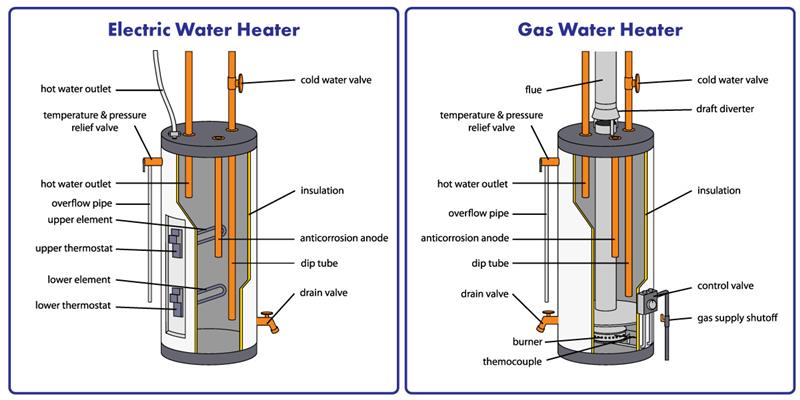
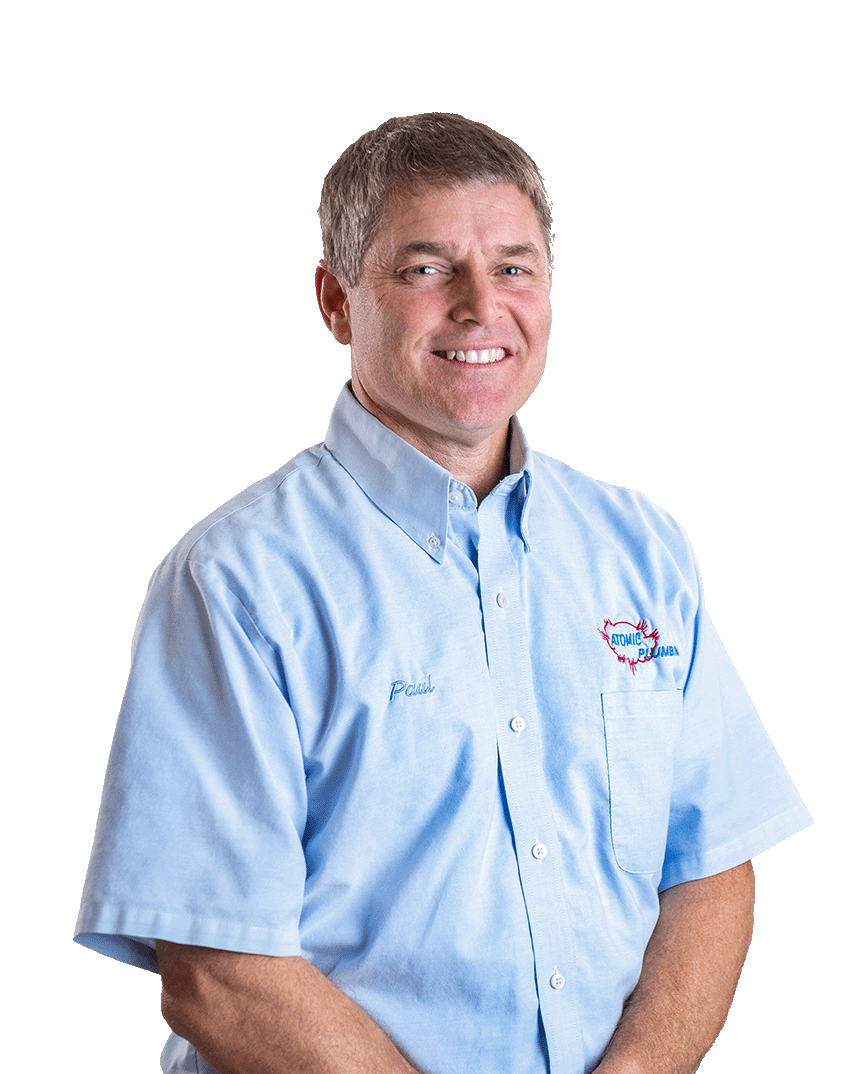
Free Estimates
Stop drain problems before they start. Call Atomic to schedule preventative or routine maintenance.
